______________________________________________________________________________
NOTE: If you would like to see the text in a larger or smaller size, follow this procedure:
If you are right-handed, hold the control button (Ctrl) down with your left hand on your keyboard and roll your mouse forward or backwards to get the text to greatly increase in size or greatly reduce in size to get to a suitable reading size for you.
______________________________________________________________________________
Italian lakes (usually found in the North of Italy) are famous the world over!
Lake Como, Lake Maggiore, Lake Garda to name just a few are some of the most popular. We were at Lake Garda and we caught a ferry to see the beautiful town of Sirmione.
From: A website:
Sirmione is one of the most popular “sights” on Lake Garda, with thousands of visitors flooding in each day to view the picturesque peninsula. It may not be the best known place to stay for a lake holiday in Italy, but images of the castle and Roman ruins feature in every information booklet about Lake Garda.
Sirmione is a comune in the province of Brescia, in Lombardy (northern Italy). It is bounded by the comunes of Desenzano del Garda (Lombardy) and Peschiera del Garda in the province of Verona and the region of Veneto. It has a historical centre which is located on the Sirmio peninsula that divides the lower part of Lake Garda.
From: Sirmione – Visit Garda:
Known to everyone as “ the pearl of the islands and peninsulas” thanks to Catullo, Sirmione is famous for it’s thermal water with it’s healing properties. Situated on the south bank of Lake Garda, in correspondence with a long and narrow peninsula that divides the gulfs of Desenzano and Peschiera, Sirmione was made even more famous thanks to writers such as Catullo, Stendhal, Lawrence and Goethe that honoured its artistic and environmental beauty.
Remembered as “Mansio” (together with other public buildings subject to a decurion), after the fall of the Roman Empire, Sirmione became a part of the Longobard kingdom, and in the XII century, it had its own independent administration from Verona. During the Scaligera regime, in XIII century, a wall was built around it and also an impressive fortress, after that it passed to Venice in the XV century.
Apart from hosting a Spa of international level, it also has a rich historical and artistic heritage, that includes the ruins of an ancient Roman Villa of the first imperial era, known as the Catullo Grottoes , the Scaligera Fortress and the church of “S. Pietro” in Mavino, that dates back to at least VIII century. The city centre is characterised by the narrow alleys with the walls of stone, offering its visitors romantic and suggestive views. Today Sirmione is one of the most important tourist centres of the Garda Lake, with sports and recreational facilities to practise the water sports (windsurfing, sailing, etc.) and hotel establishments and services at an international level, able to satisfy the needs of even the most demanding clients.
History:
The first traces of human presence in the area of Sirmione dates from the 6th-5th millennia BC. Settlements on palafitte existed in the 3rd and 2nd millennia BC. Starting from the 1st century BC, the area of the Garda, including what is now Sirmione, became a favourite resort for rich families coming from Verona, then the main Roman city in north-eastern Italy. The poet Catullus praised the beauties of the city and spoke of a villa he had in the area.
In the late Roman era (4th-5th centuries AD) the city became a fortified strongpoint defending the southern shore of the lake. A settlement existed also after the Lombard conquest of northern Italy: in the late years of the Lombard kingdom, the city was capital of a judiciary district directly subordinated to the king. Ansa, wife of King Desiderius, founded a monastery and a church in the city.
______________________________________________________________________________
Map of Lake Garda
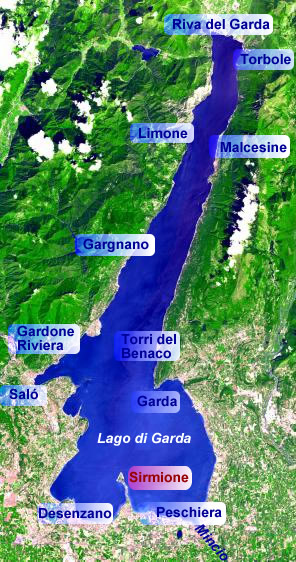
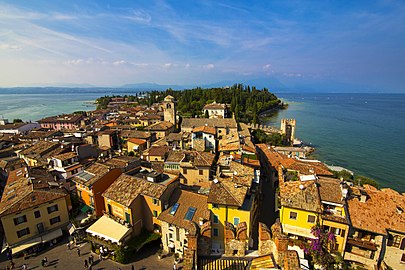
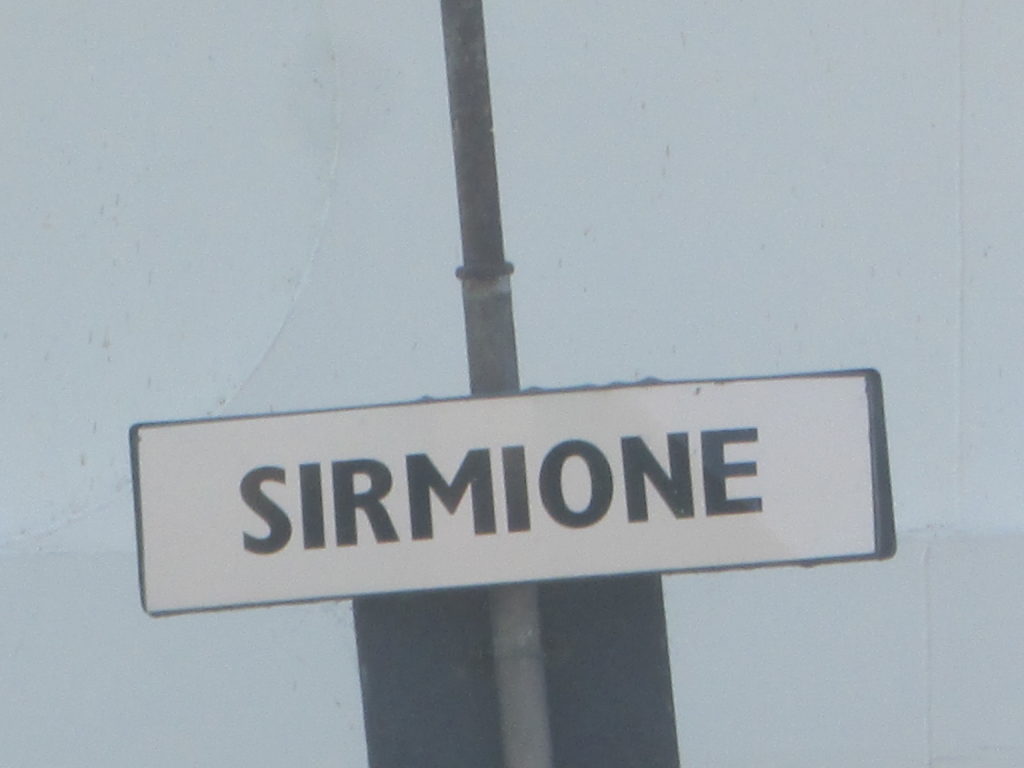
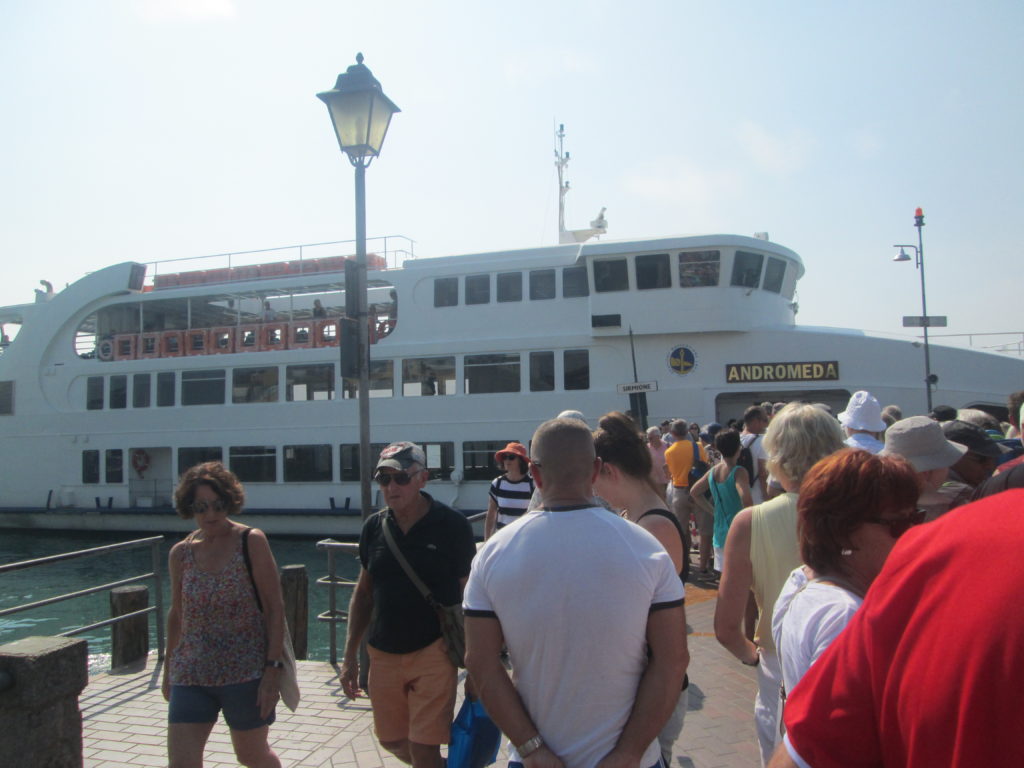
The ferry we came on from Garda to Sirmione.
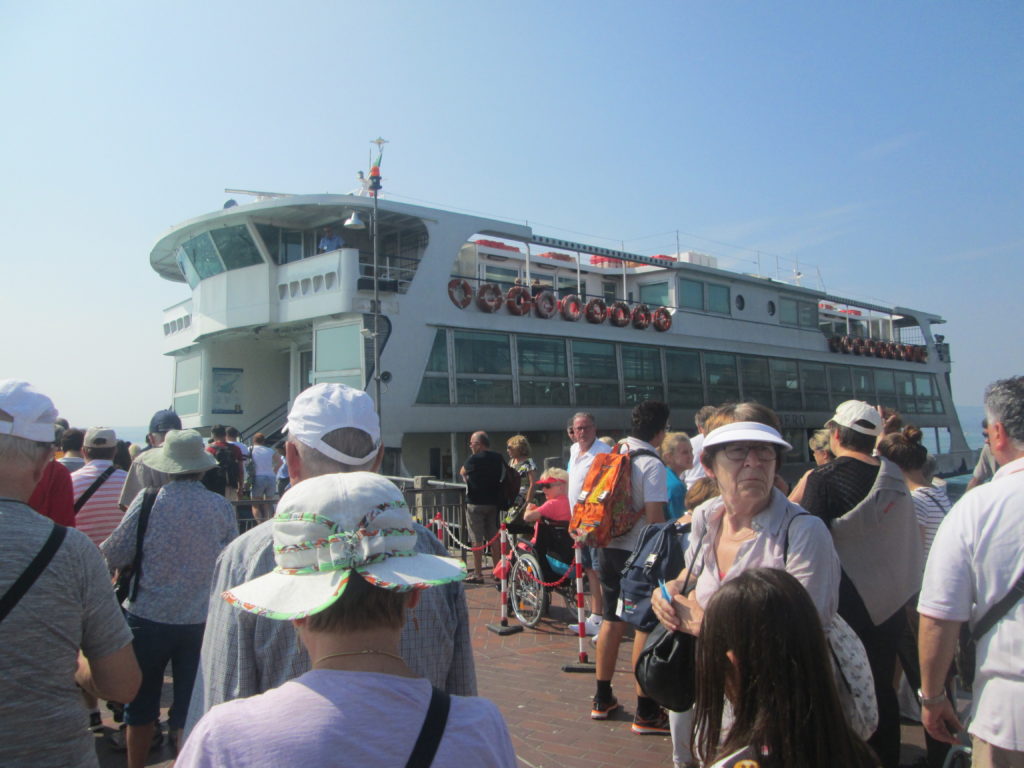
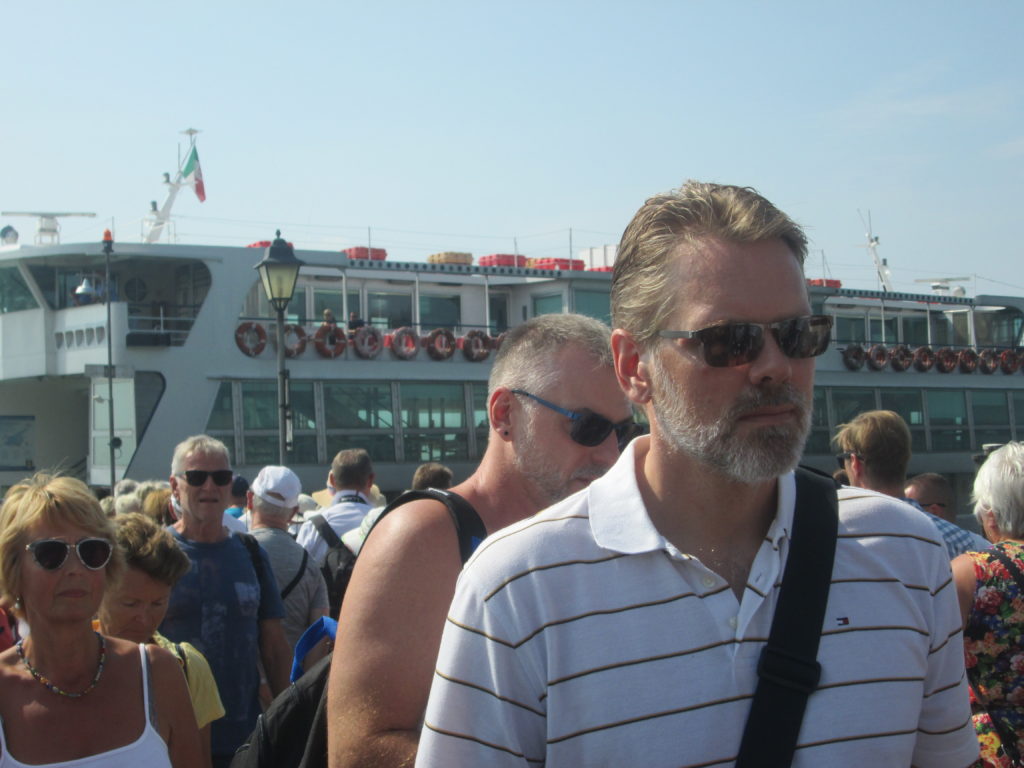
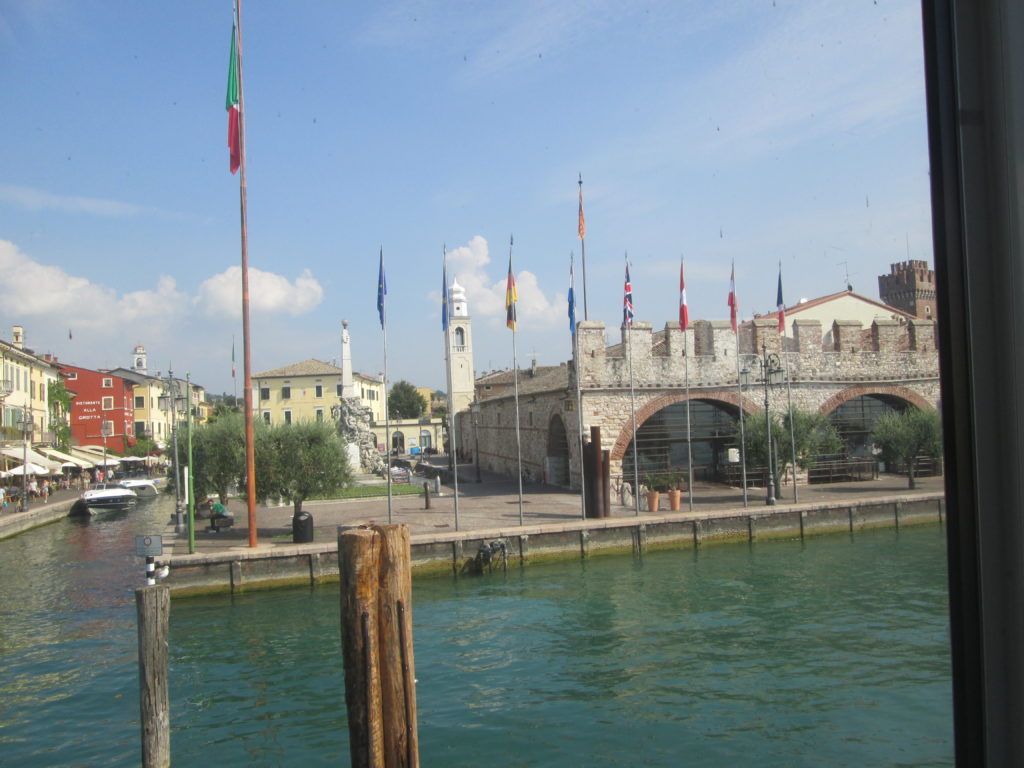
A view of water in the side canal and people waiting for the ferry.
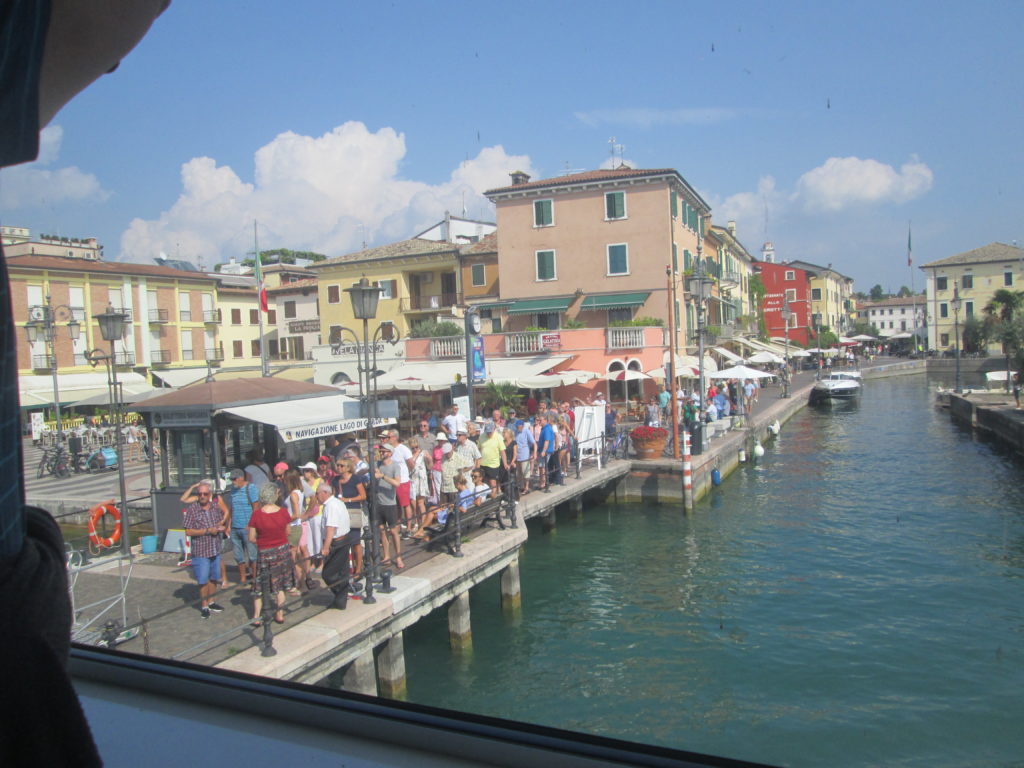
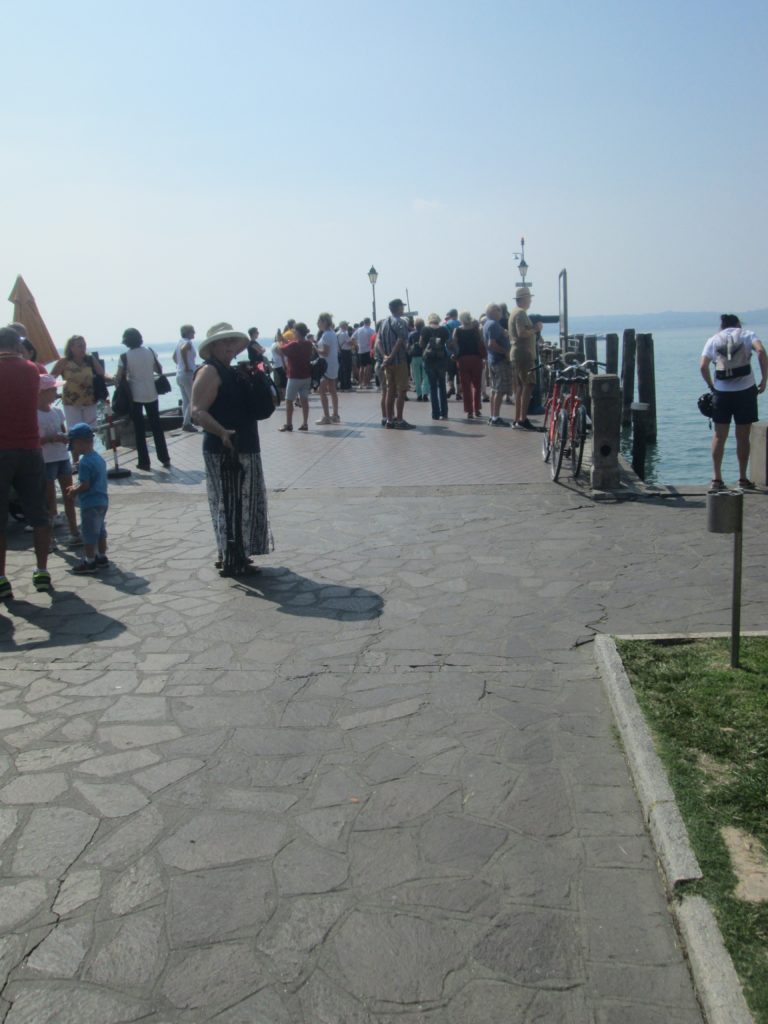
On the wharf at Sirmione harbor.
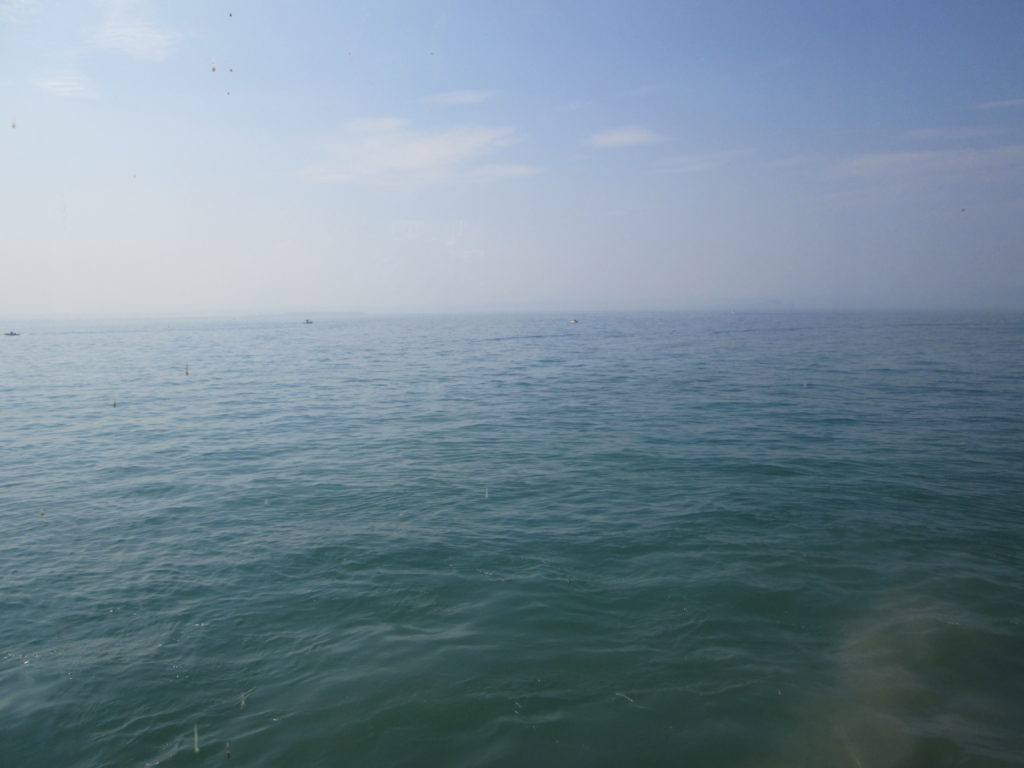
A view over the water of Lake Garda at Sirmione harbor.
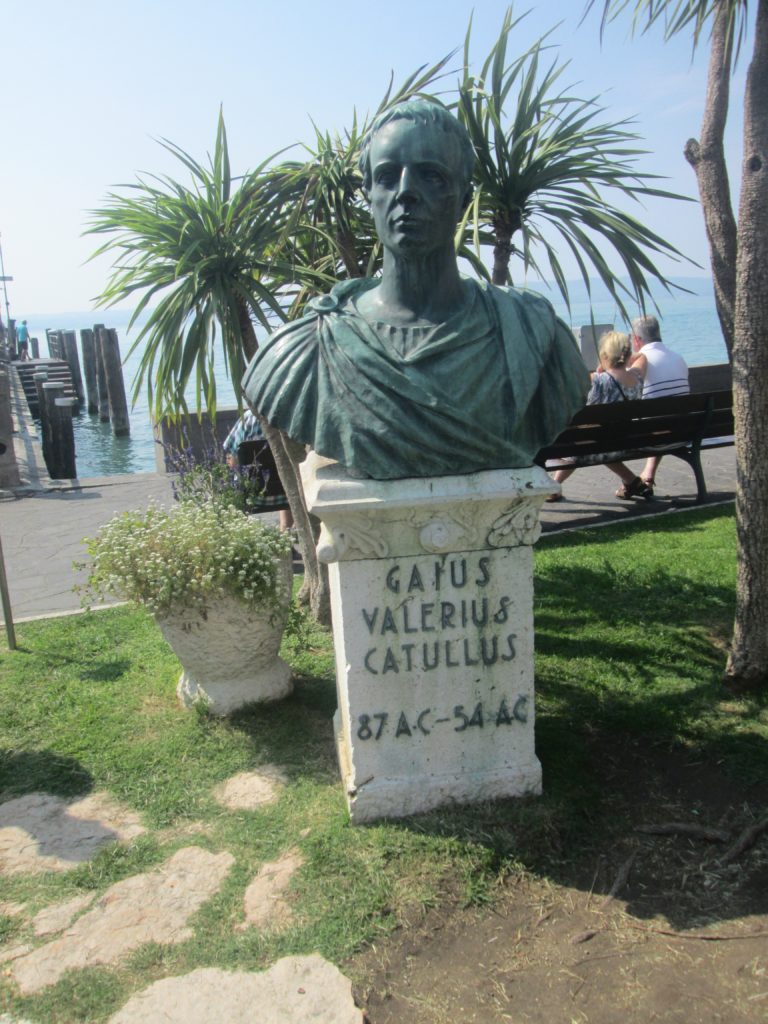
Catullus: https://en.wikipedia.org/wiki/Catullus
Gaius Valerius Catullus (/kəˈtʌləs/; Latin: [kaˈtʊllʊs]; c. 84 – c. 54 BC) was a Latin poet of the late Roman Republic who wrote chiefly in the neoteric style of poetry, which is about personal life rather than classical heroes. His surviving works are still read widely and continue to influence poetry and other forms of art.
Catullus’s poems were widely appreciated by other poets, significantly influencing Ovid, Horace, and Virgil, among others. After his rediscovery in the Late Middle Ages, Catullus again found admirers. The explicit sexual imagery which he uses in some of his poems has shocked many readers. Indeed, Catullus’s work was never canonical in schools, although his body of work is still frequently read from secondary school to graduate programs across the world, with his 64th poem often considered his greatest.
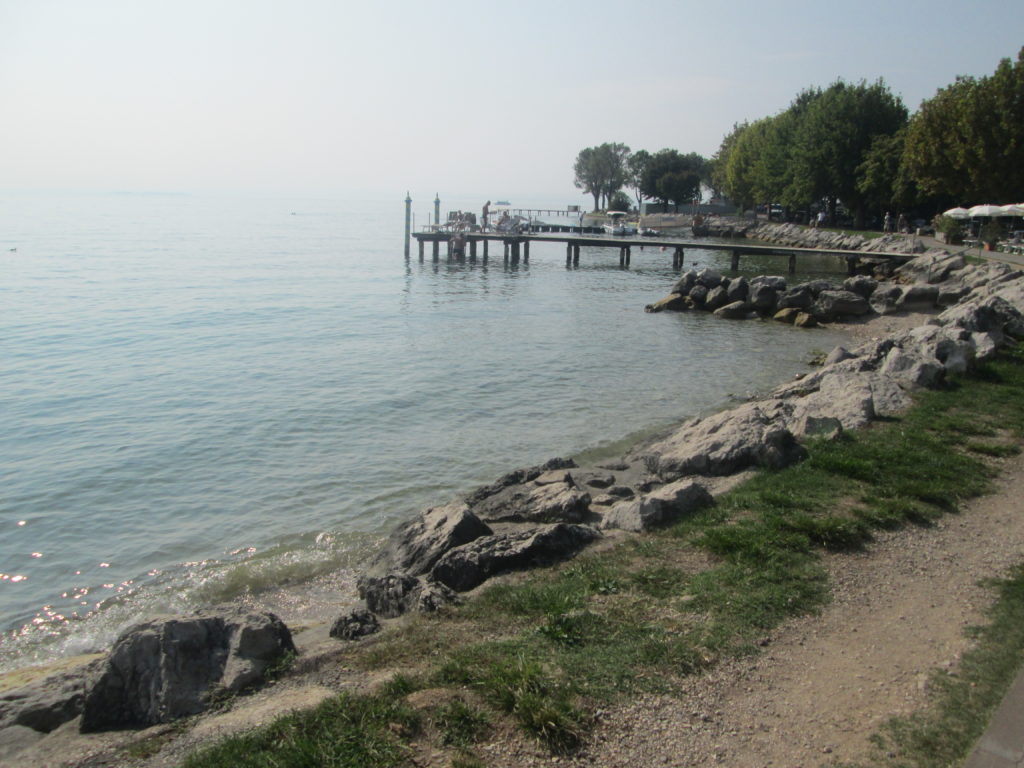
On a portion of the shore at Sirmione harbor.
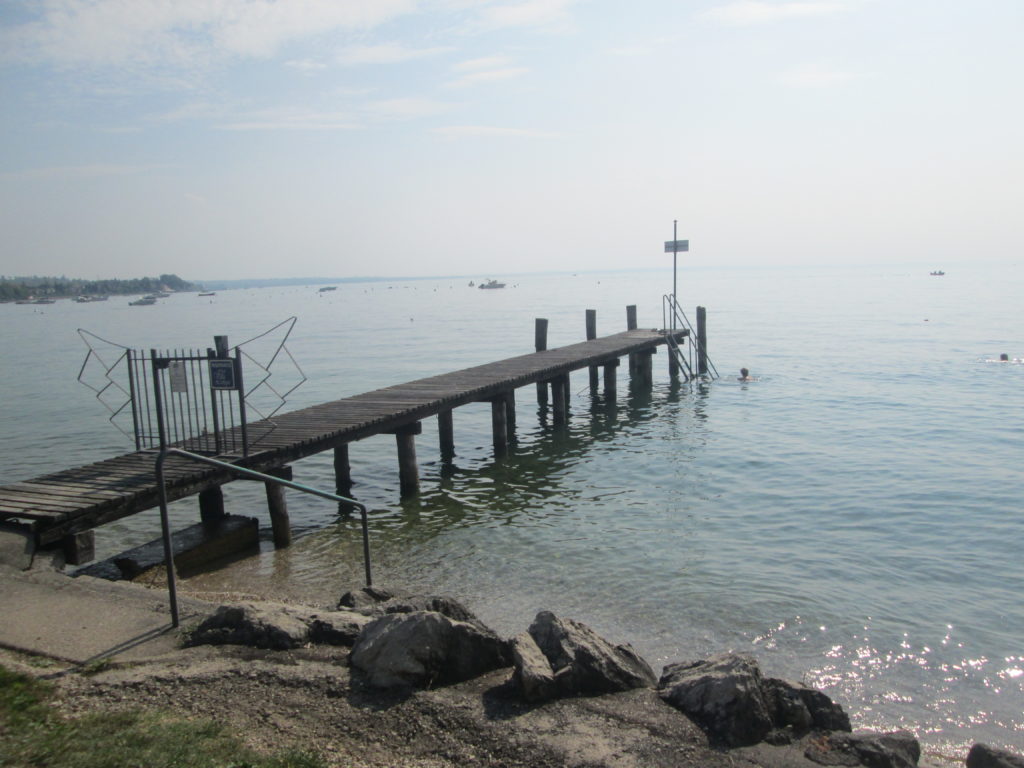
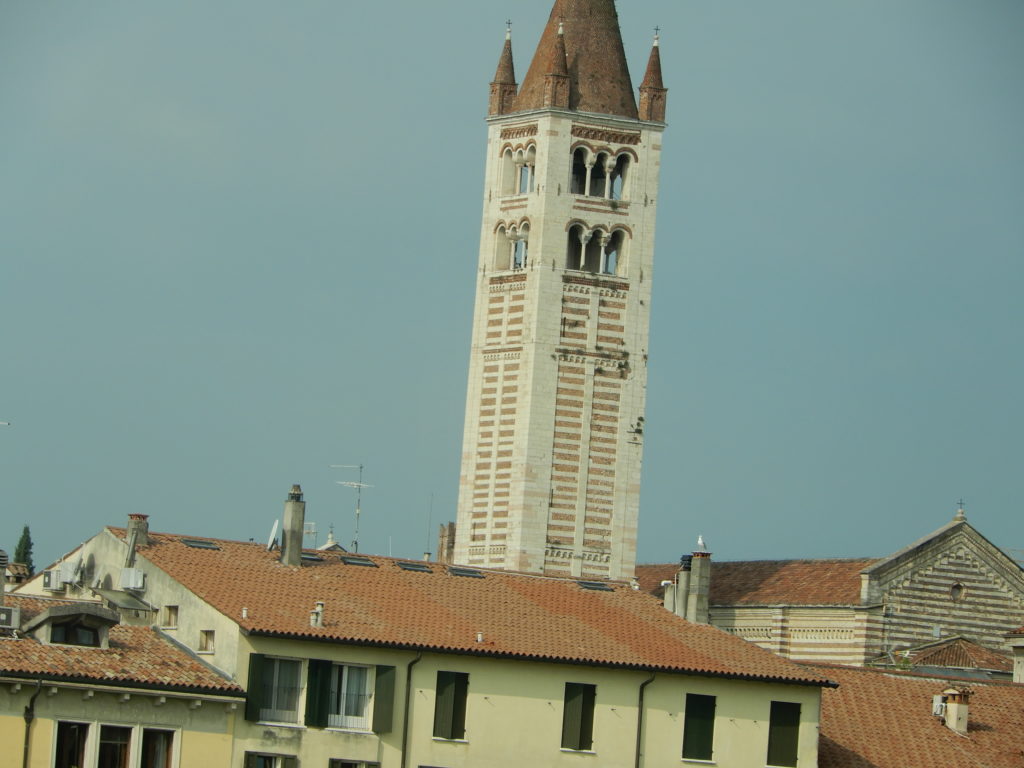
Some of the beautiful stone buildings in Sirmione ….. handmade and not machine – built. The difference is in the whimsical, artistic humanness of the buildings vs. the impersonal machine – built buildings of glass and steel.
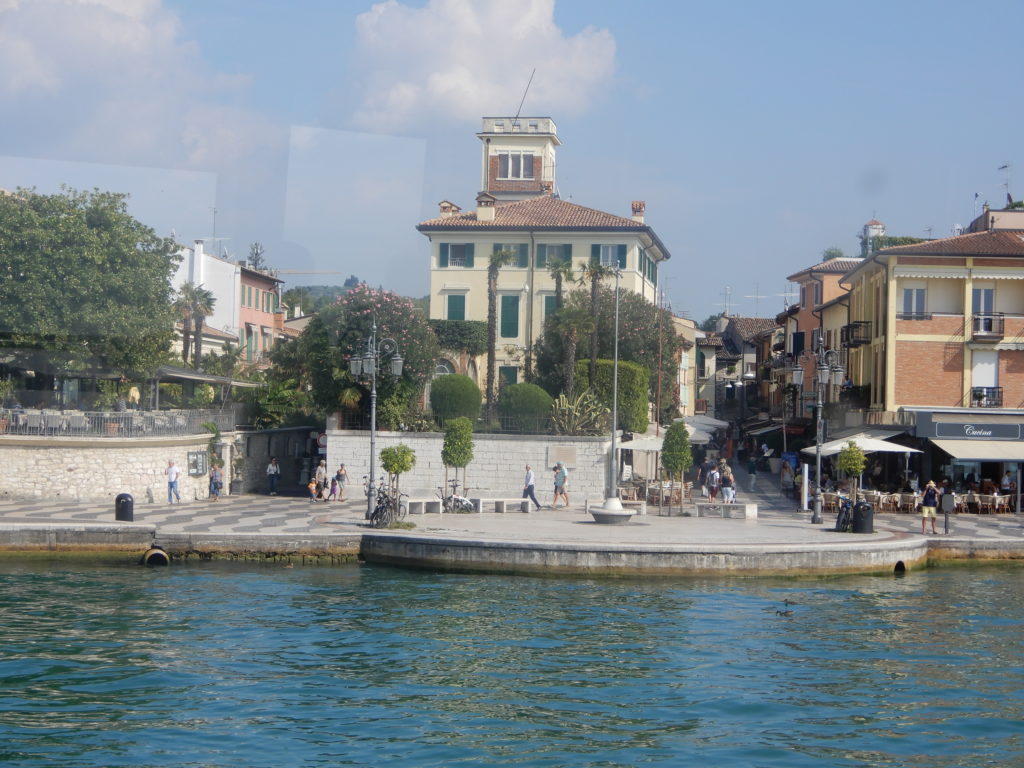
The very personal nature of the town with the little pedestrian streets and the many pavement cafes in the streets was very apparent.
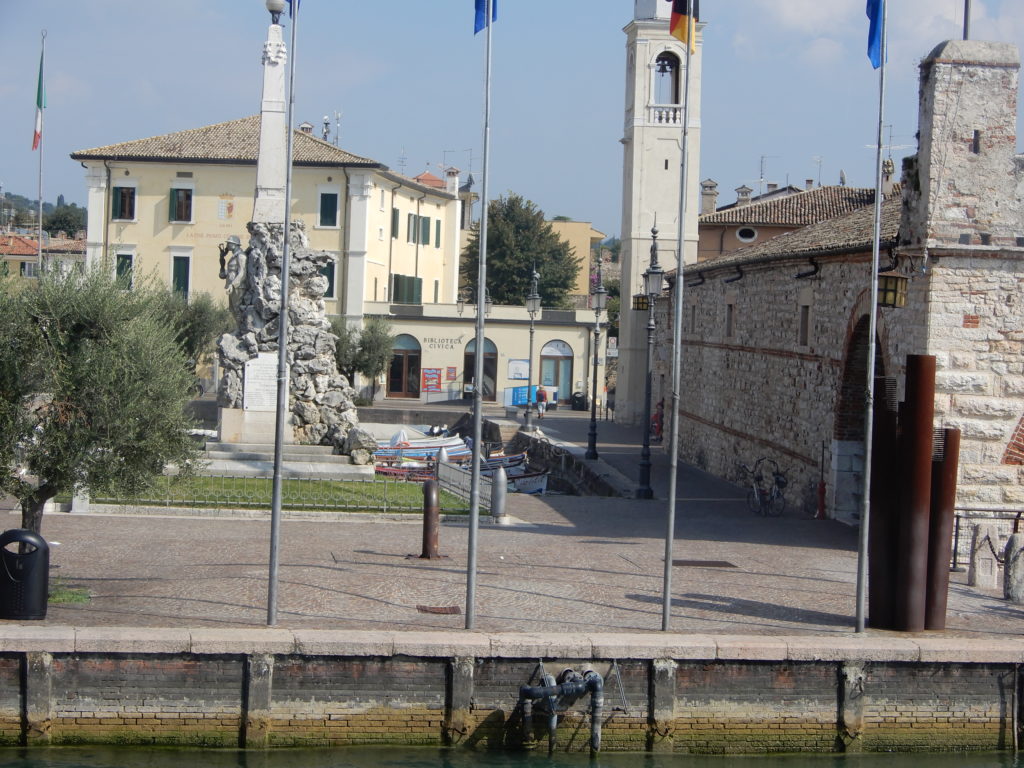
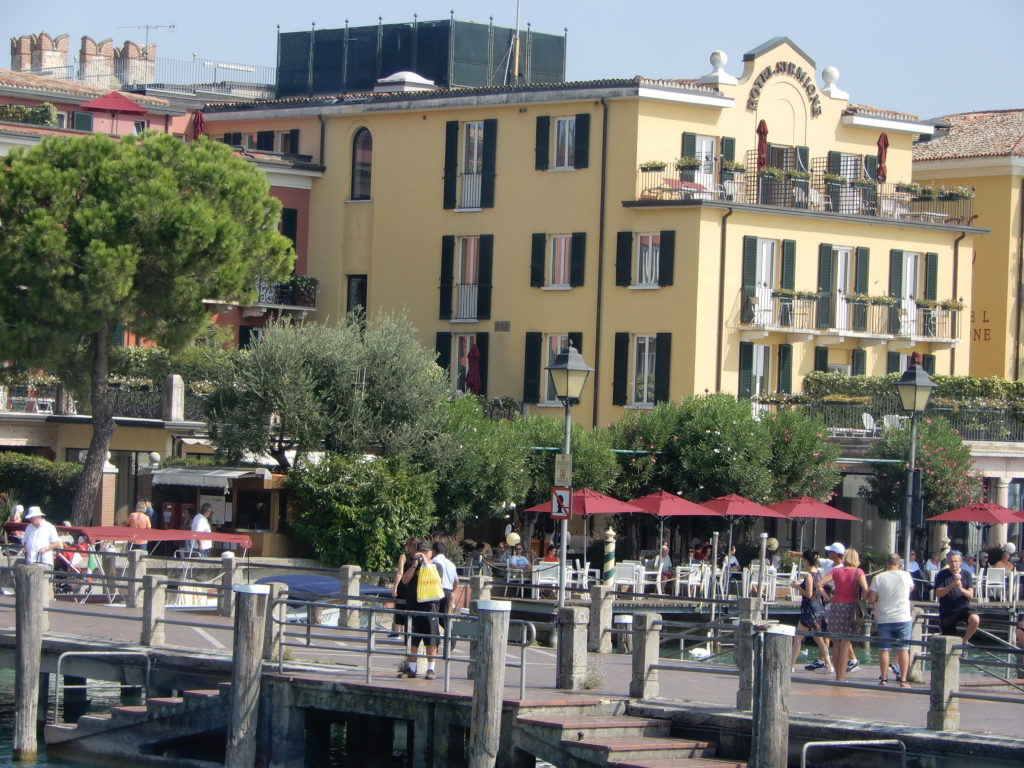
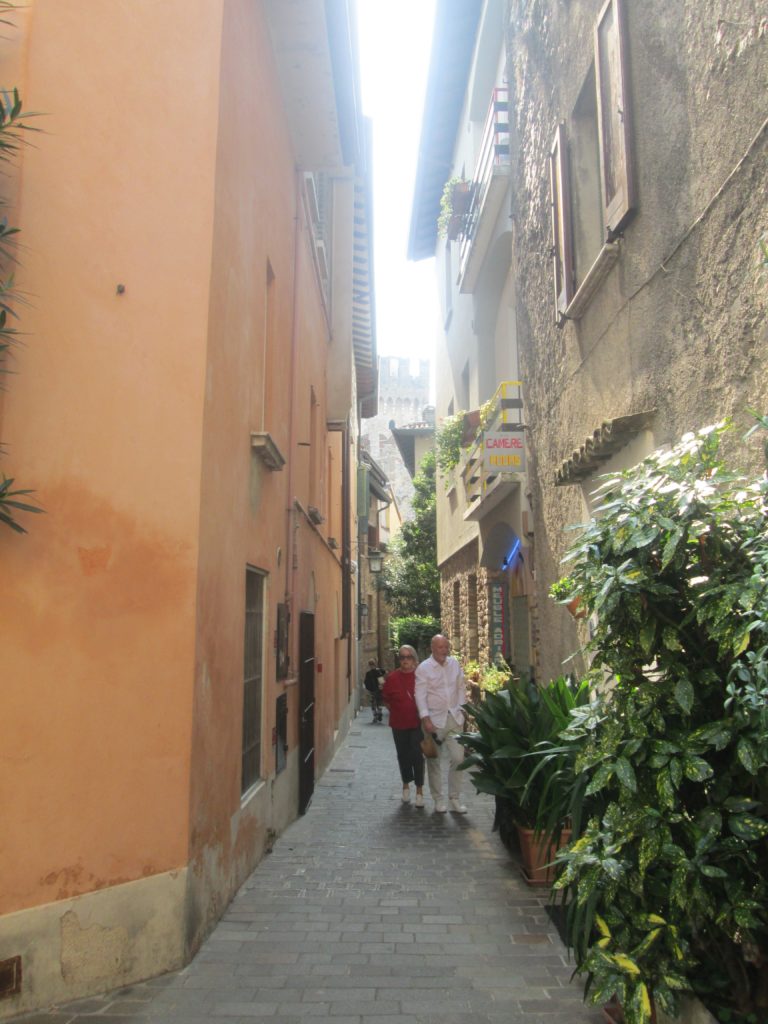
The narrow footpaths between two stone buildings has something exciting about the access. The whimsical, artistic humanness of the buildings is really apparent.
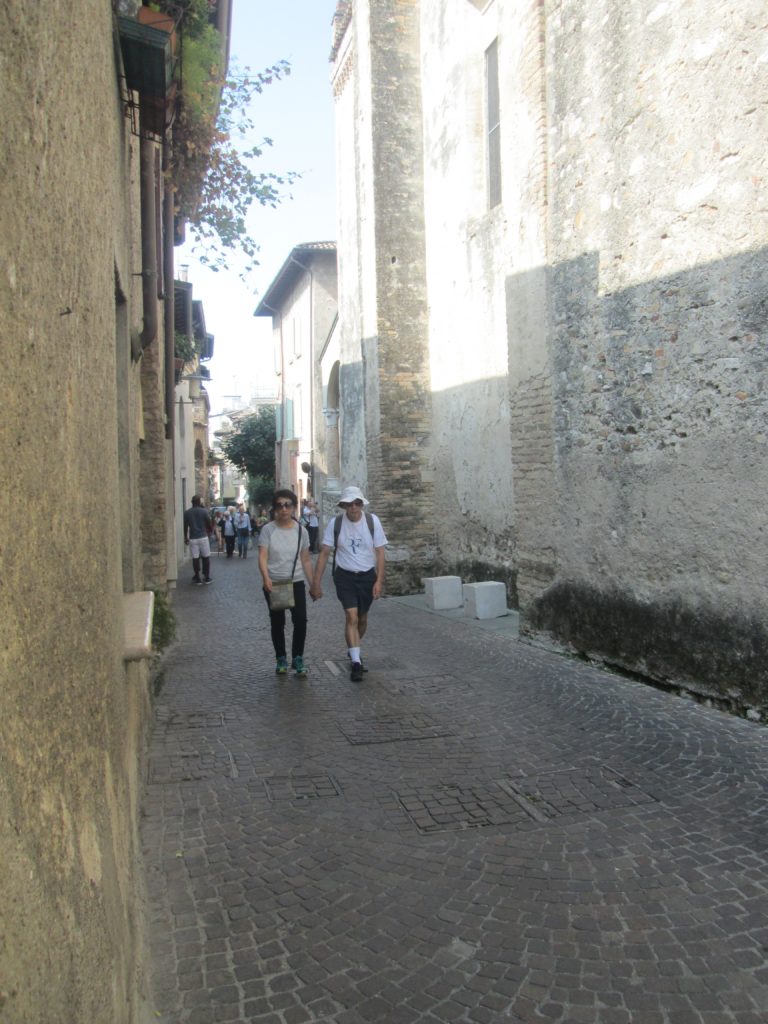
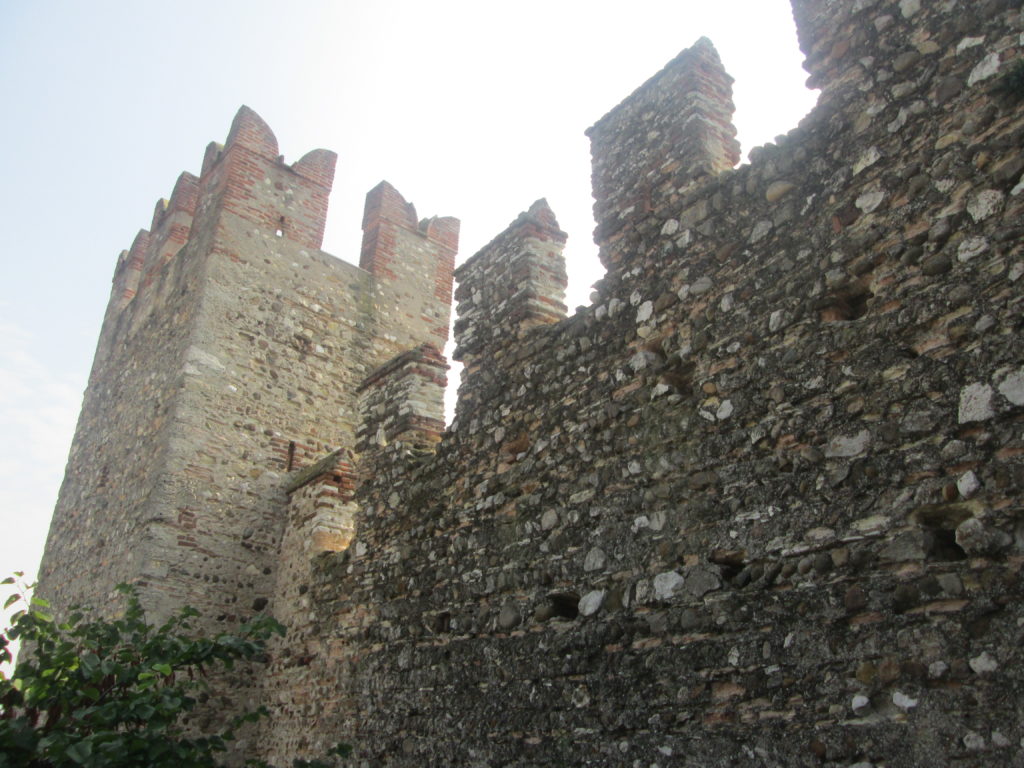
Sirmione Castle.
From this website:
The famous medieval castle that houses the ancient village is one of the most photographed monuments in the world.
Sirmione castle, called Rocca Scaligera, is one of the most complete and best preserved in Italy. The fortified medieval centre is defended by the Scaligera Fortress, strategically positioned on the only point of access by the land. There are other similar fortress from the same period along the Verona side of the lake. Sirmione castle is one of the most complete and best preserved in Italy. The two crenelated towers stand out impressively, a symbol of the power of Mastino I della Scala who started the first phase of construction of the Fortress around 1259. The castle was once surrounded by fortifications covering a vast area of the peninsula. It has main courtyard with a main tower, three corner towers and two entrances. At a later date a secondary courtyard was added to the South of the main one as well as the small Southern entrance way. On a third occasion, building work was carried out for the dock and the third courtyard. The Fortress is surrounded by the water and is accessible today by the drawbridge. Visitors can climb the main tower by climbing 146 steps and from the patrol walkways can be reached.
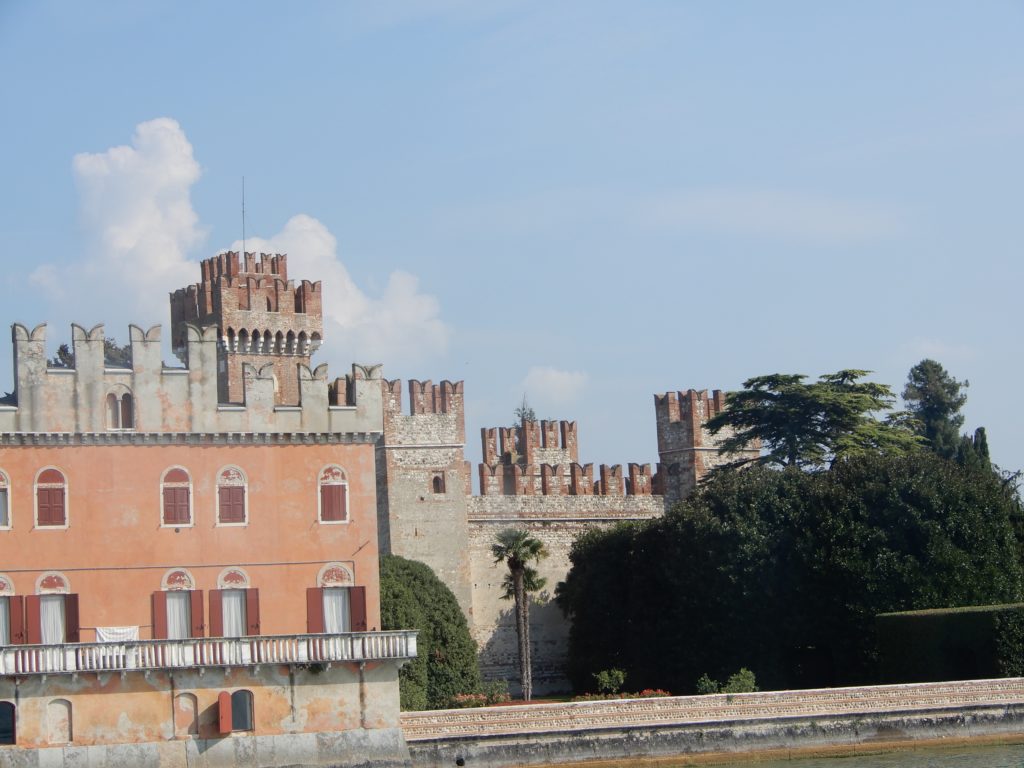
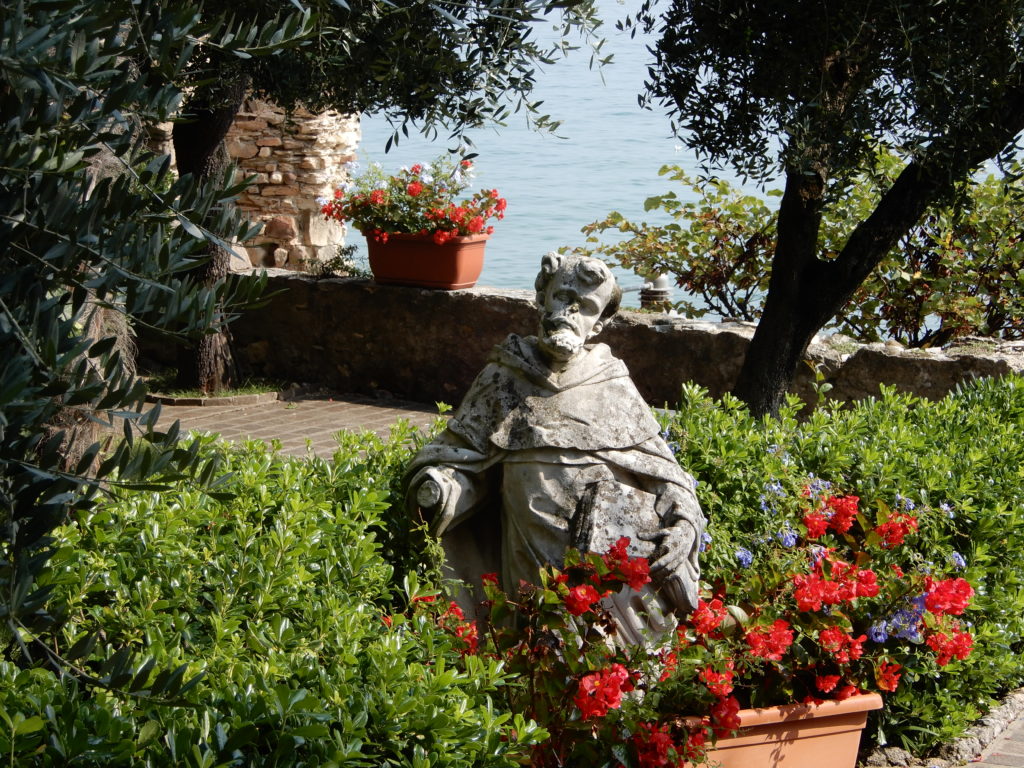
A beautiful little courtyard edged by pots of plants, a stone sculpture, low stonewalls and small trees. Intermittent views of the lake vs. solid structures makes you curious as to what is further on.
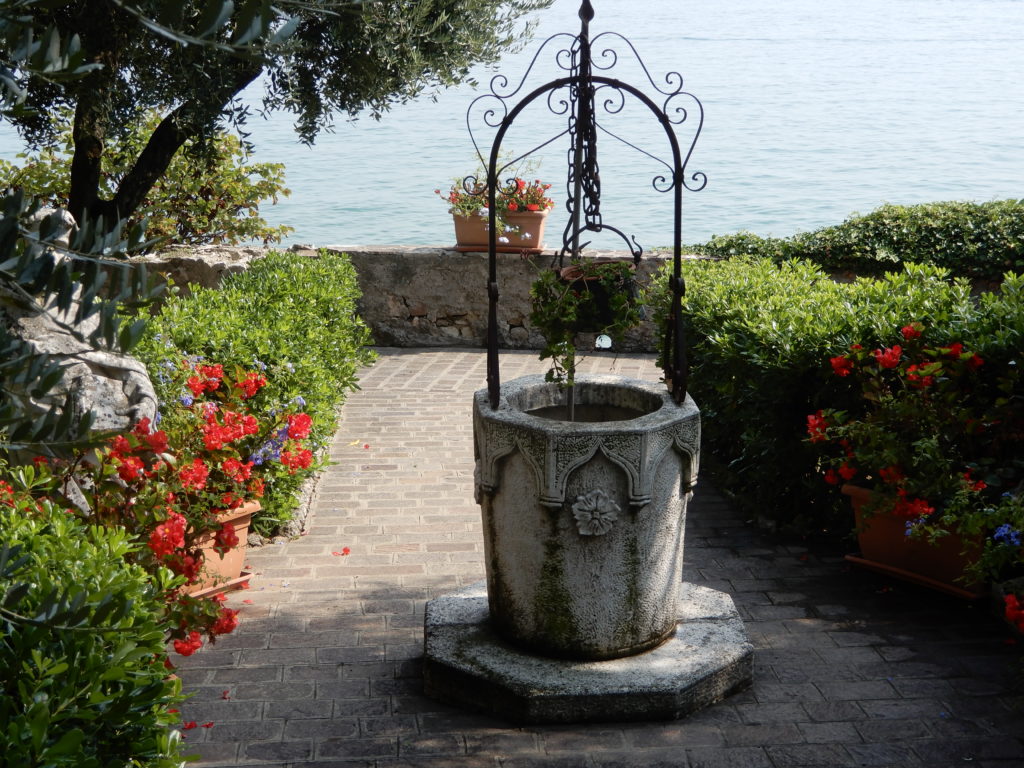
A well in the courtyard for extracting fresh lake water is very whimsical. It well and truly predates our taps and water system in our era.
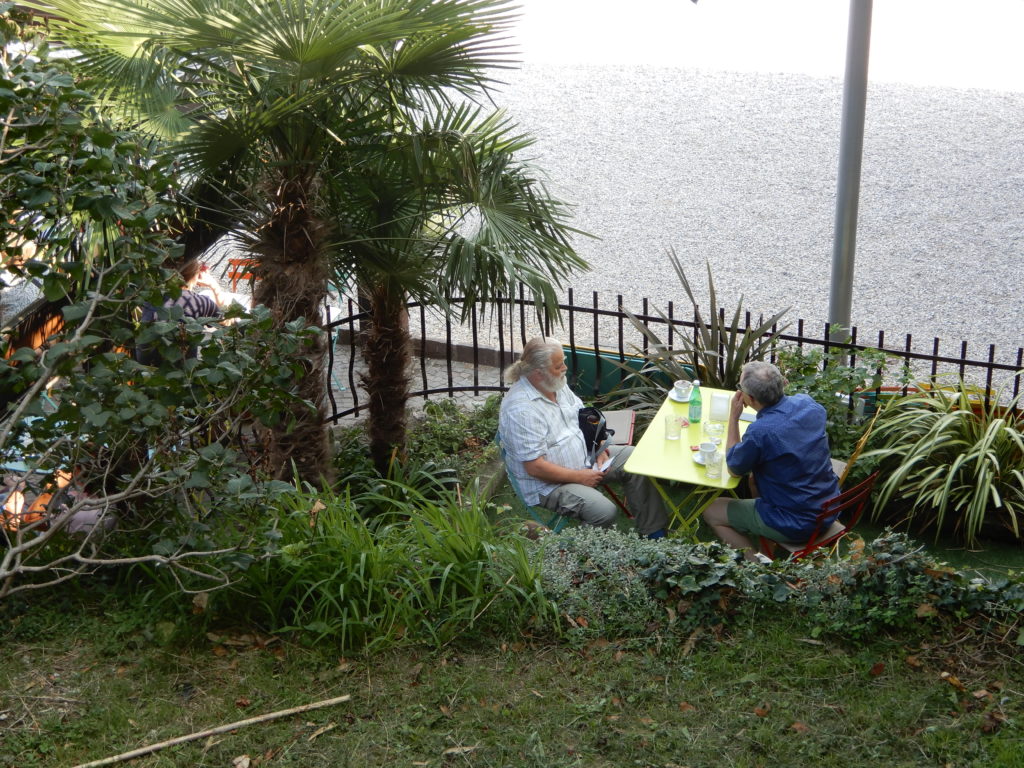
Having a little coffee table beside the lake offers a very contemplative time in our busy lifestyle.
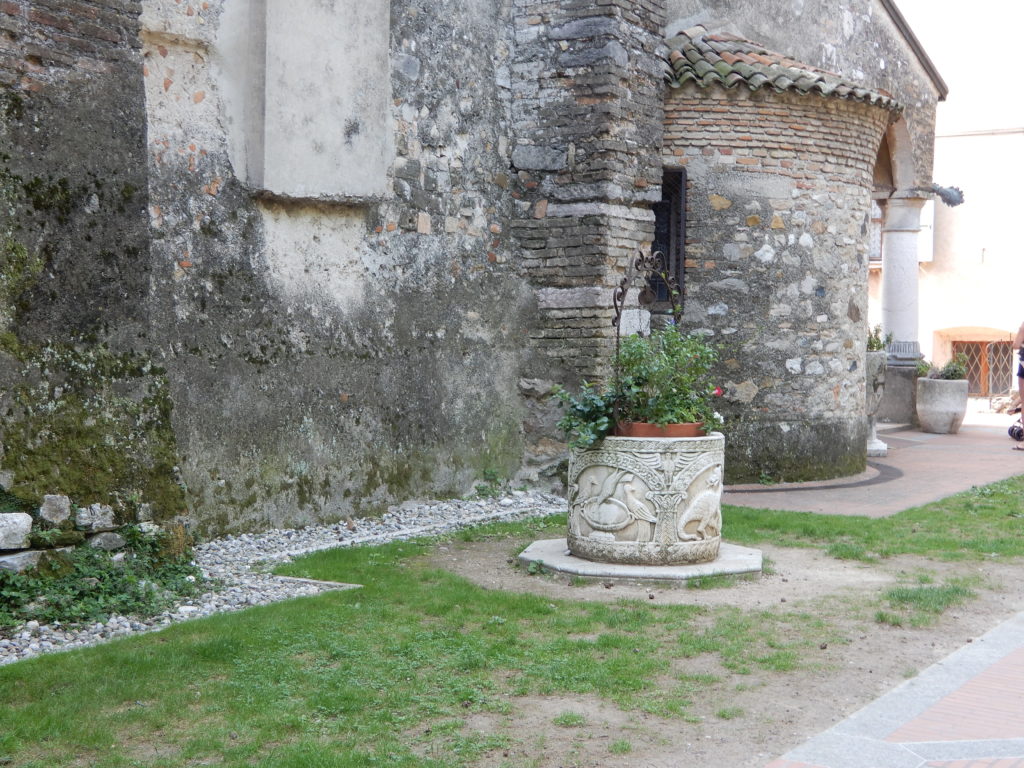
Beautiful stonewalls and columns emphases the whimsical, artistic humanness of the buildings.
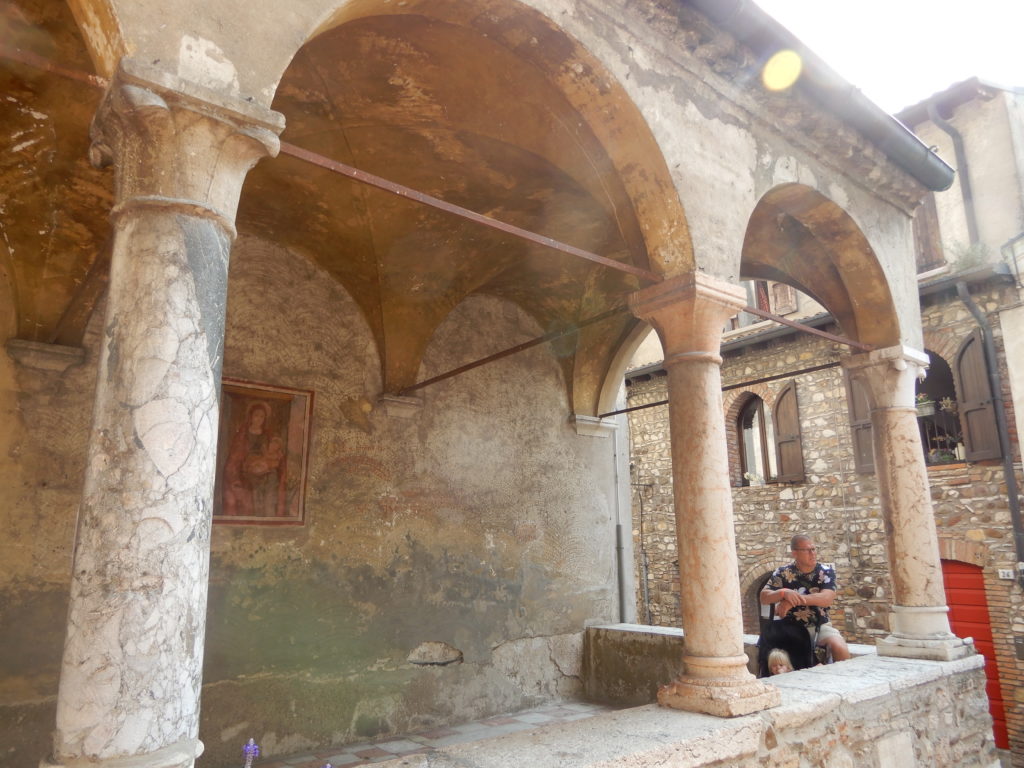
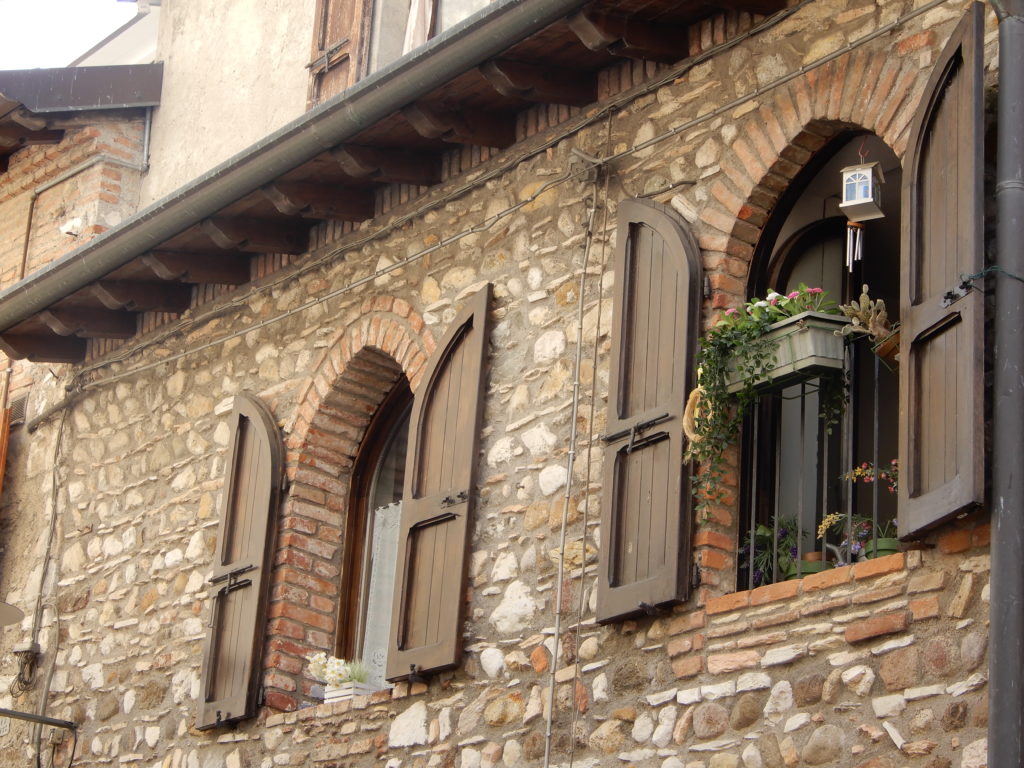
Old stone – built houses in Sirmione.
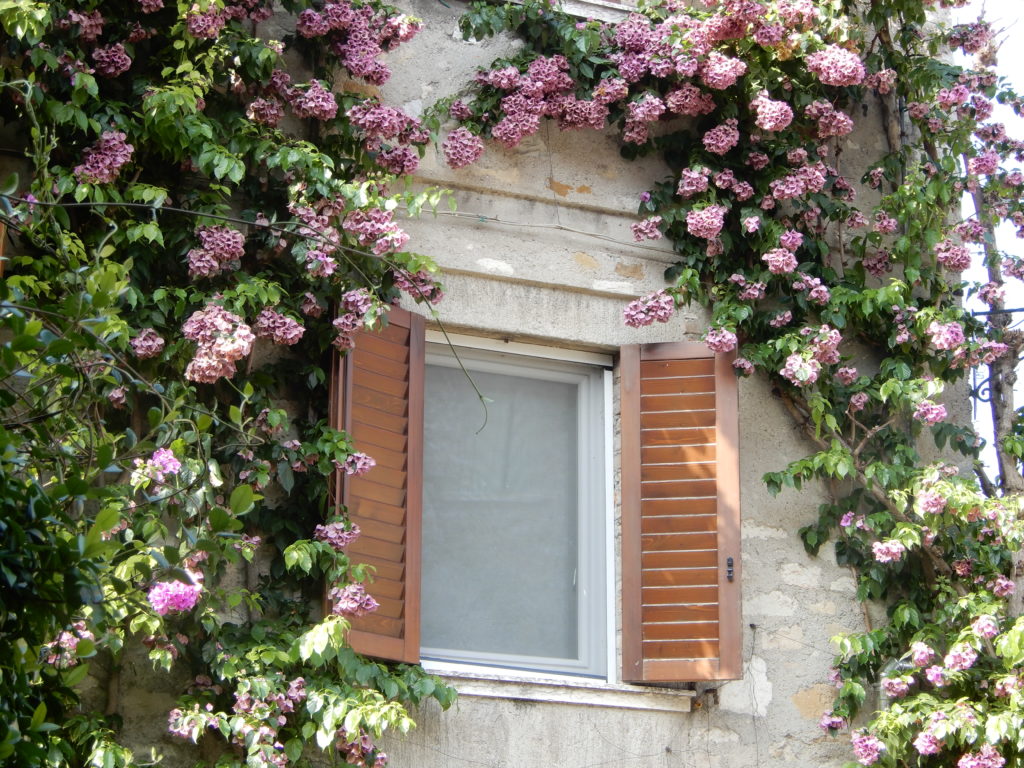
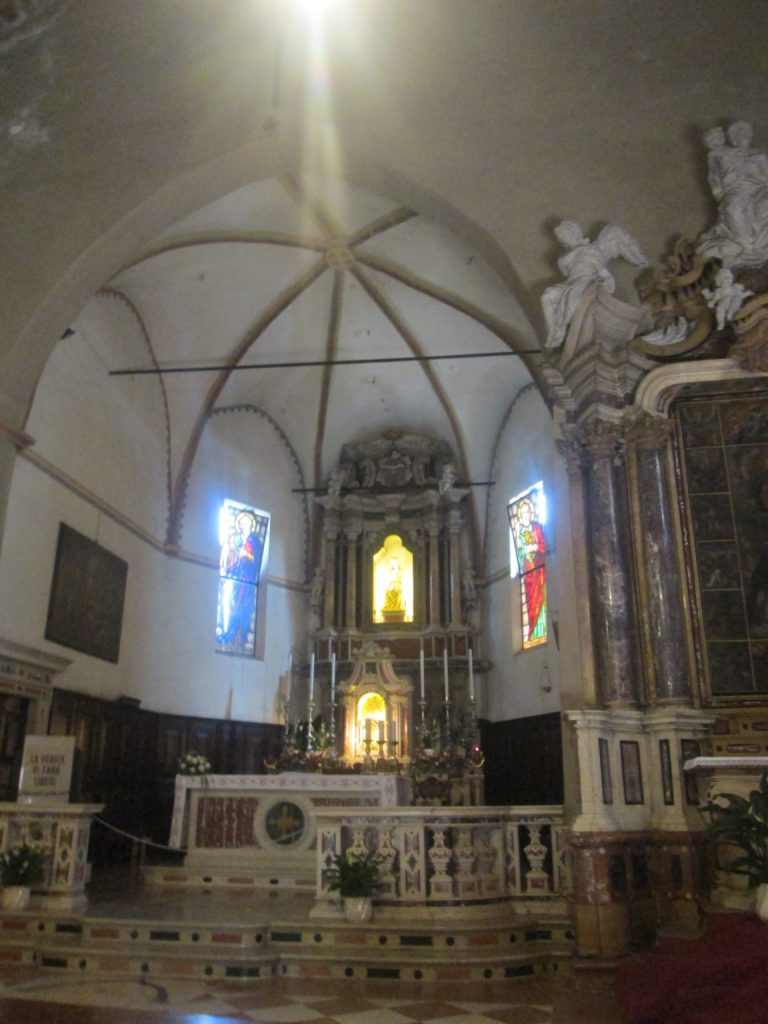
The small church Sant’Anna della Rocca, next to the castle. It dates from the 12th century and was used mainly by the garrison and the few local villagers. The frescoes in the church date from the 14th – 17th century.
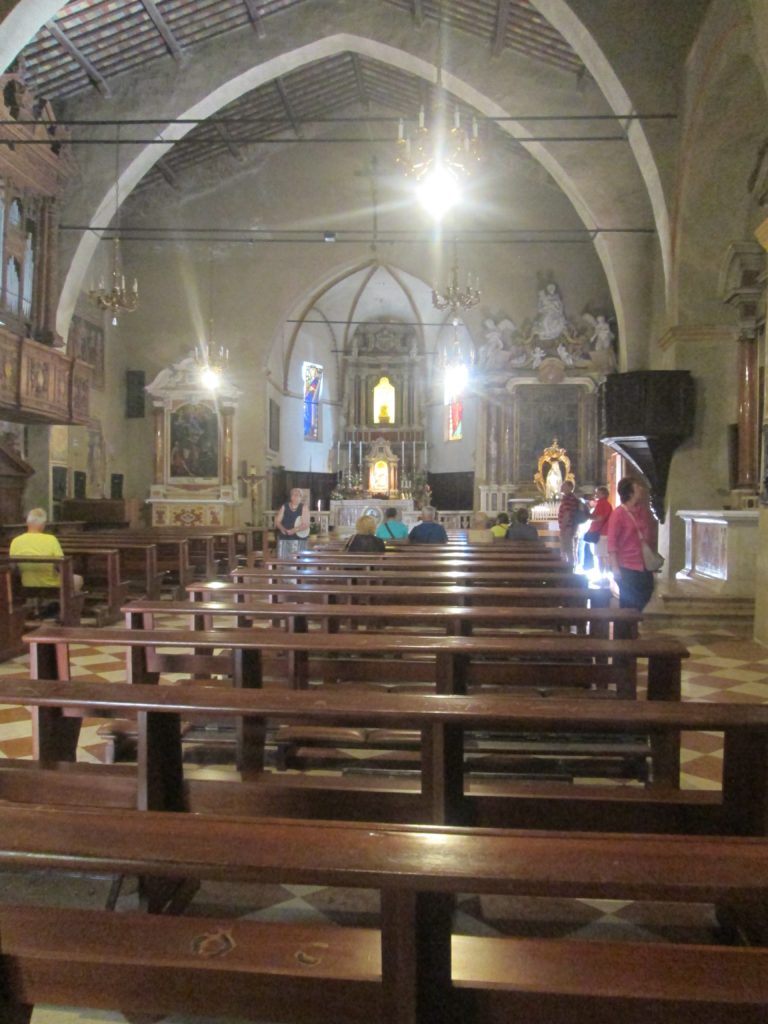
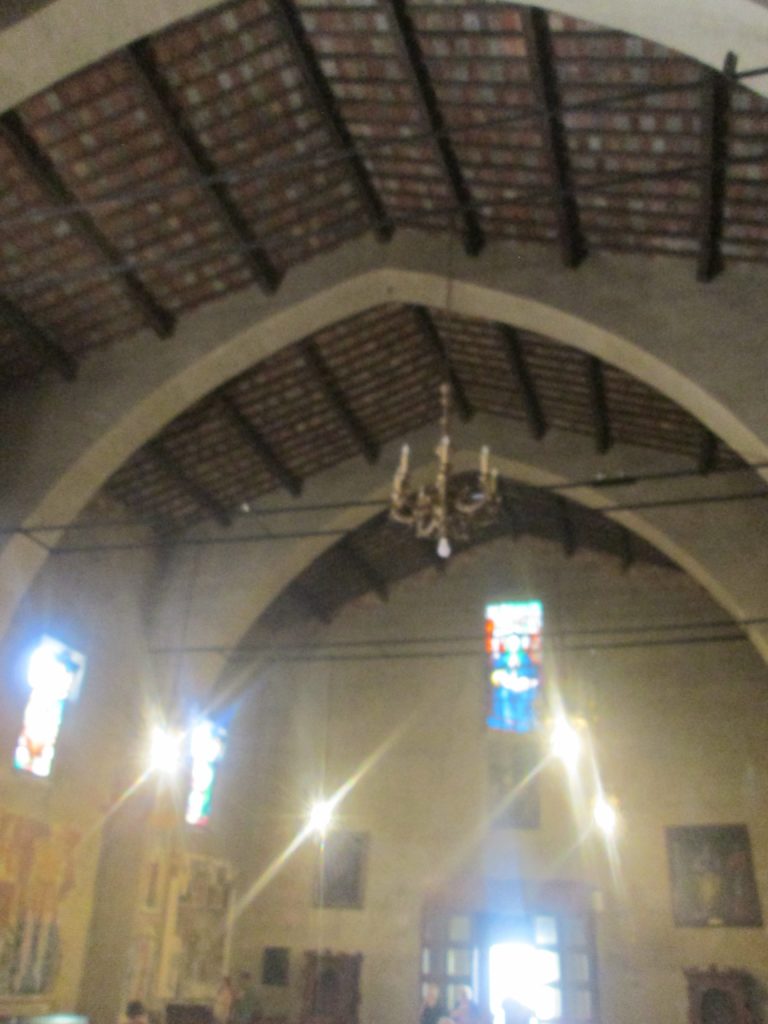
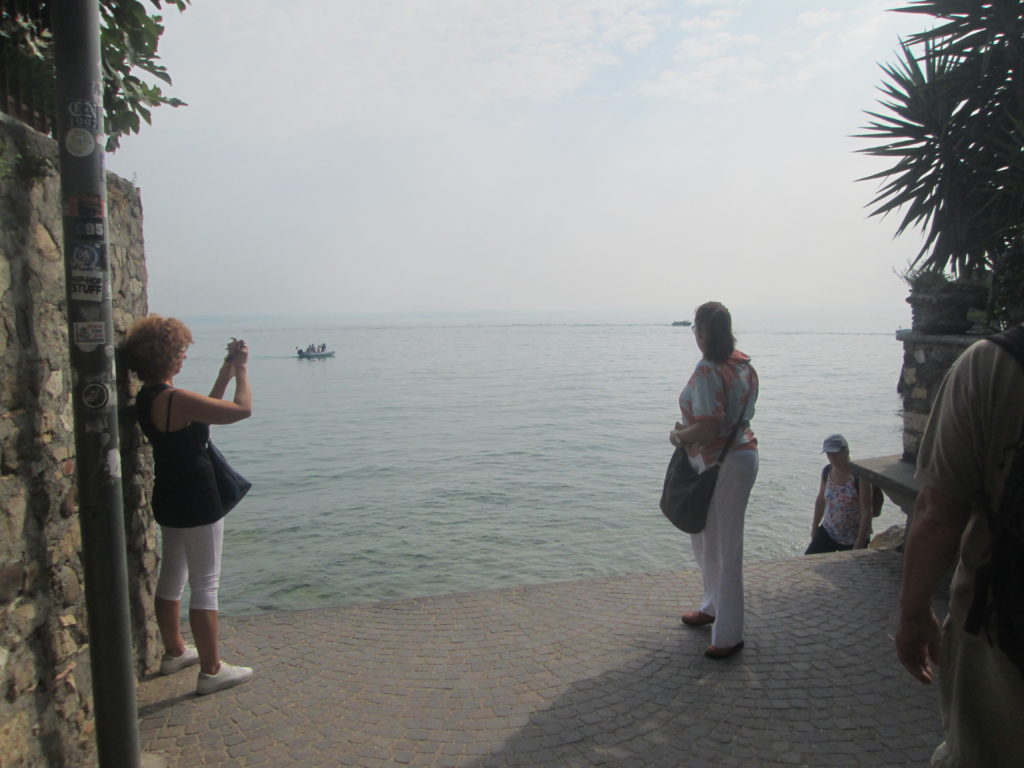
A portion of the path was circular and was made up of small hand cut stones about 75 mm x 75 mm all placed in intersecting curves or a circle as shown below. They were hand – placed and cut vs. machine – cut and placed. This gave a very personal and historic dimension to the town.

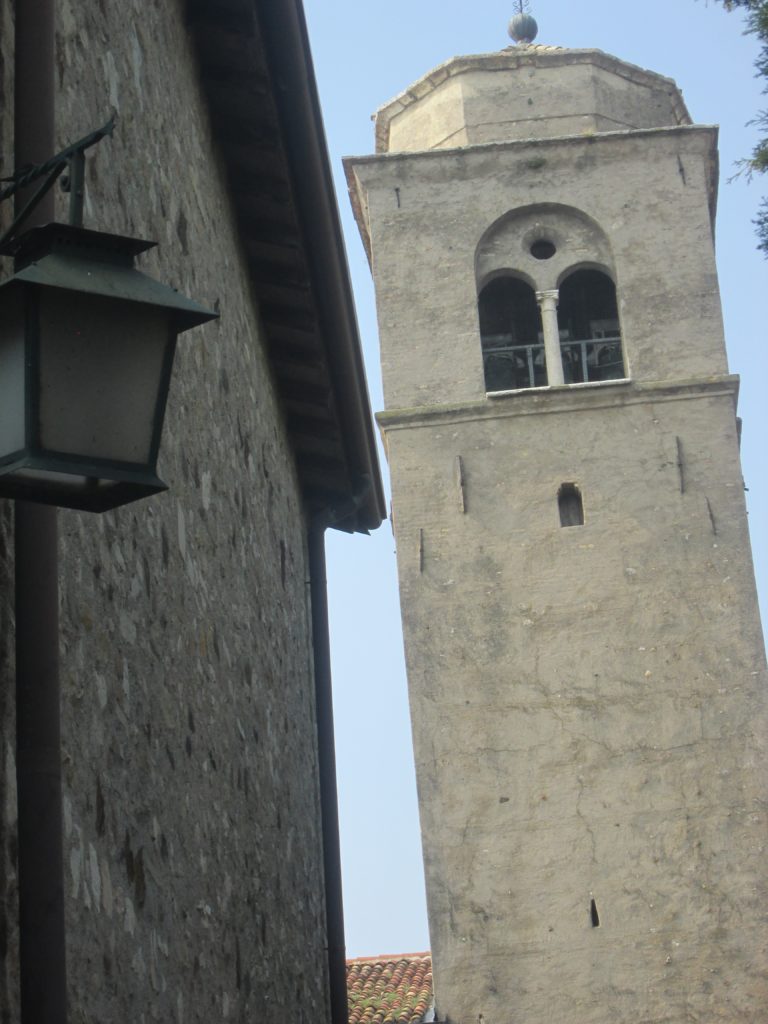
A fortress tower closeup. This is in sharp contrast to today’s defense system which uses jet planes and bombs against an enemy.
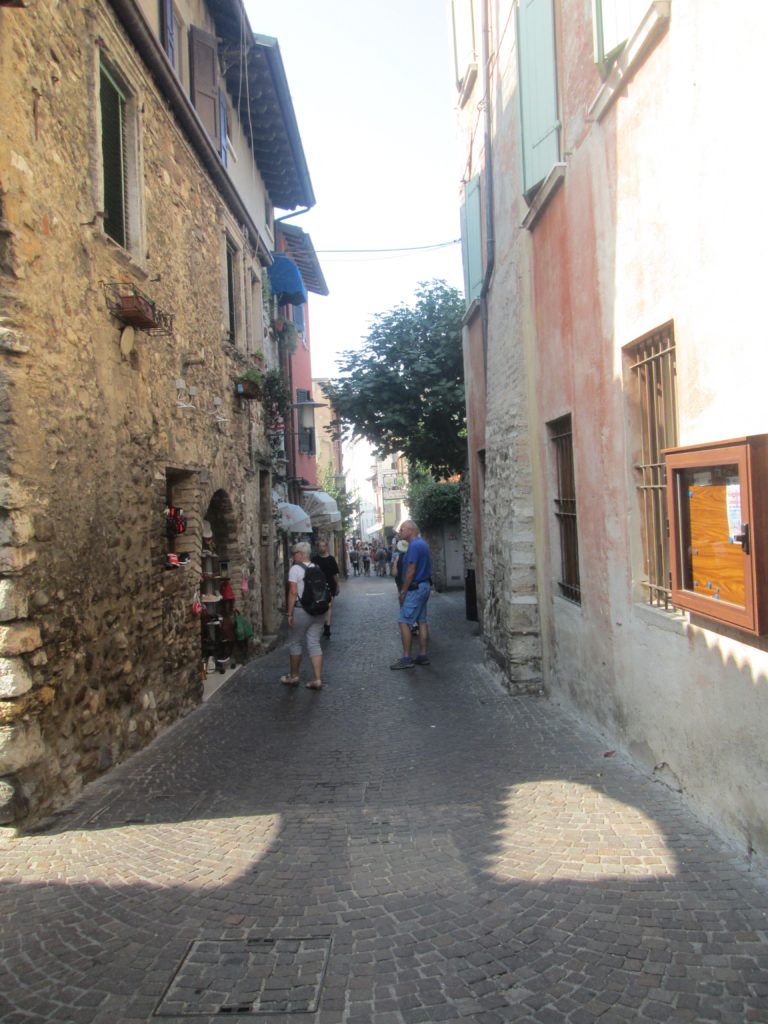
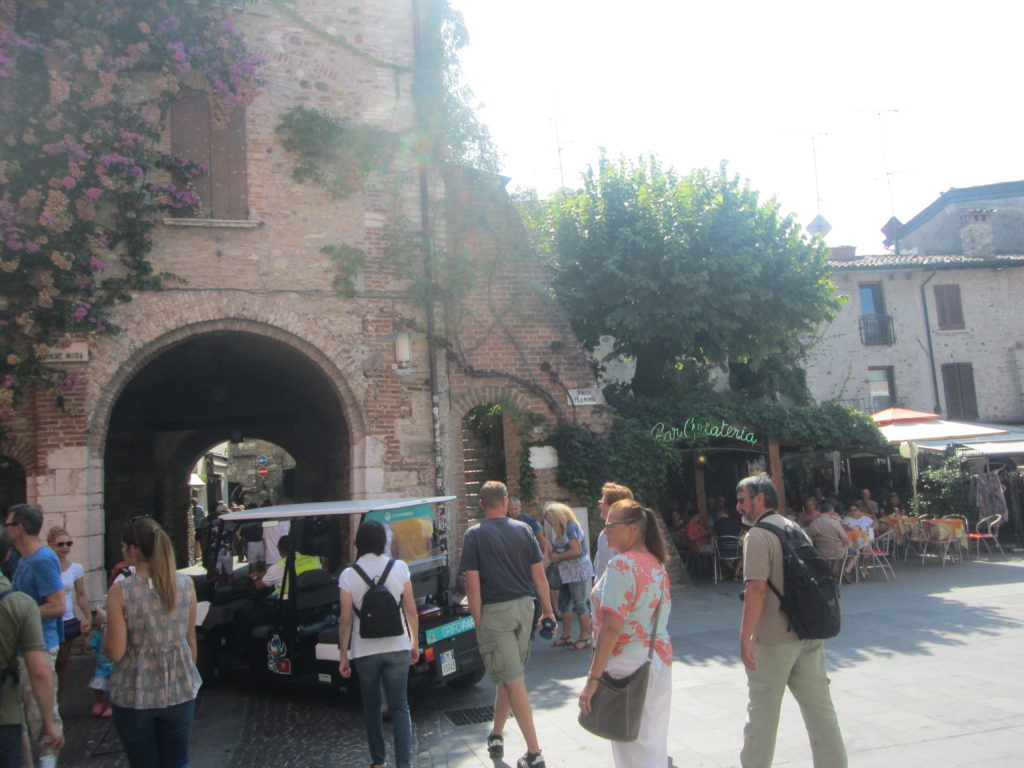
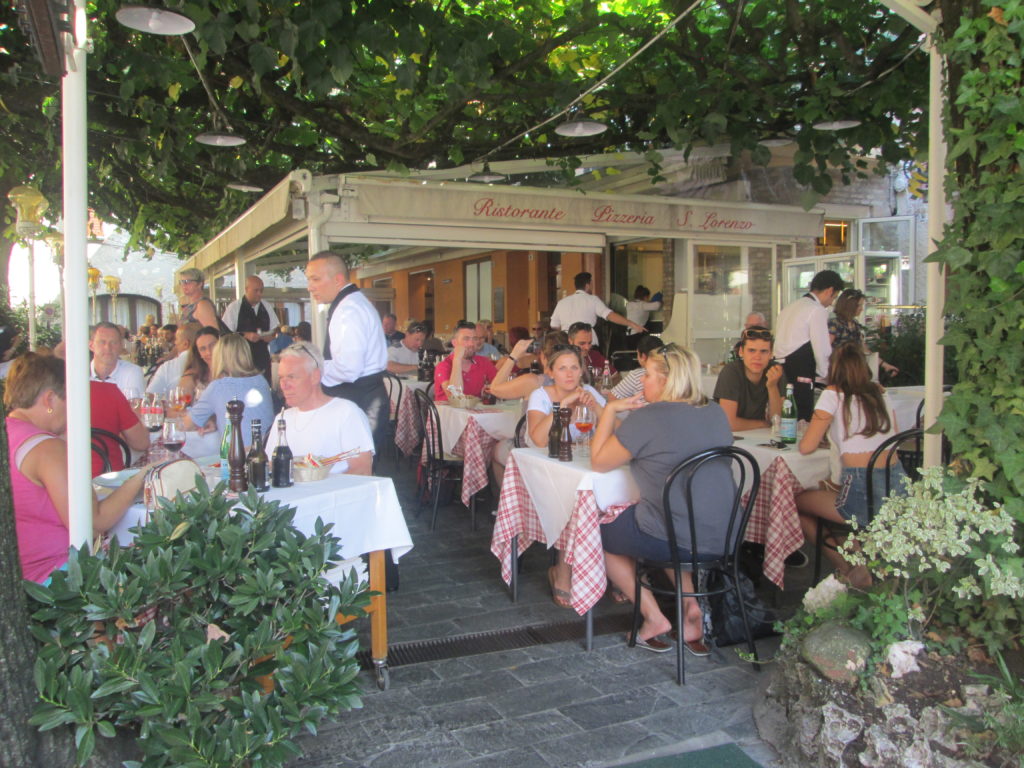
A pavement cafe on the street gives a very communal and personal dimension to the town.
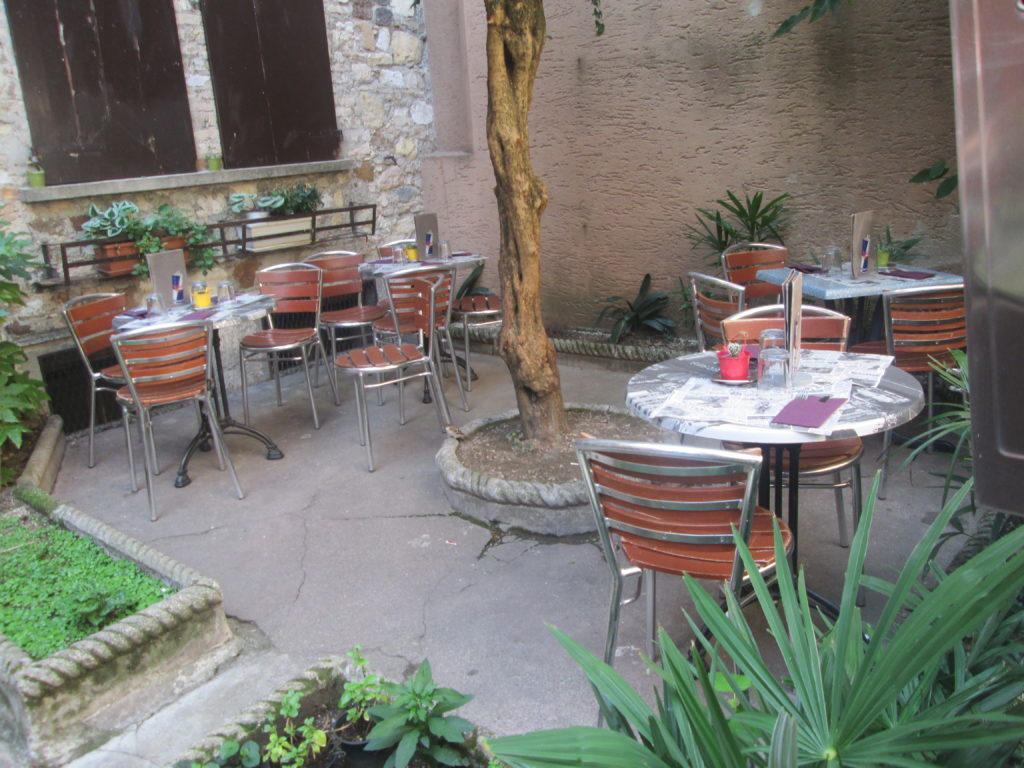
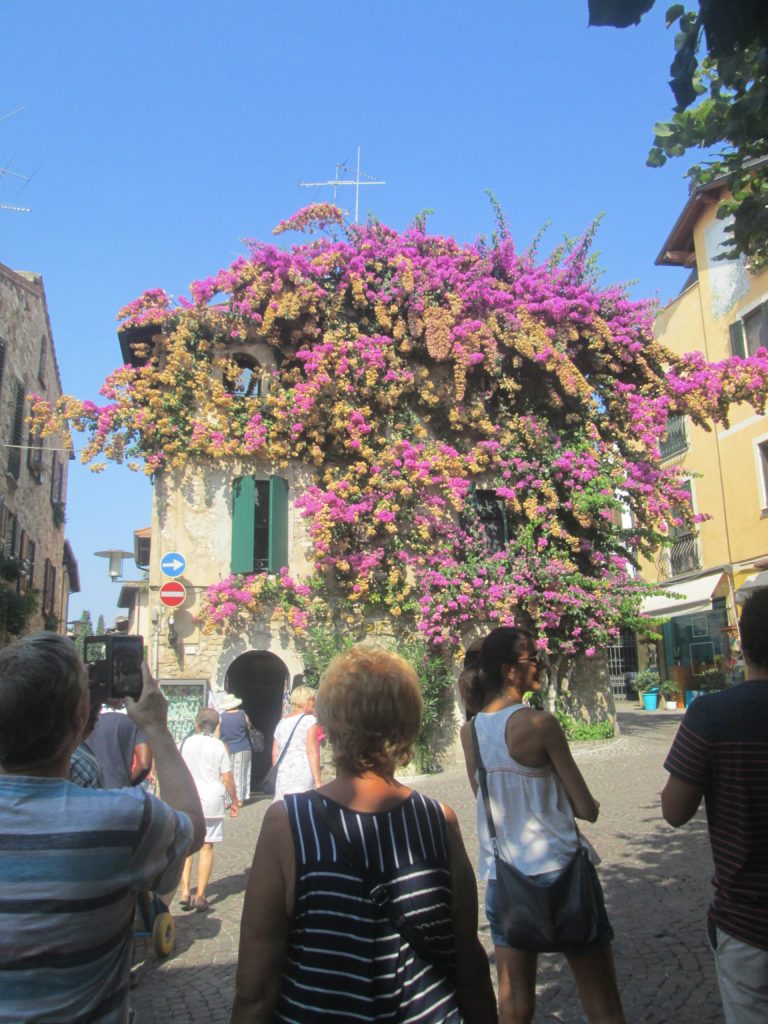
The tower of flowering bougainvillea is very eye catching.
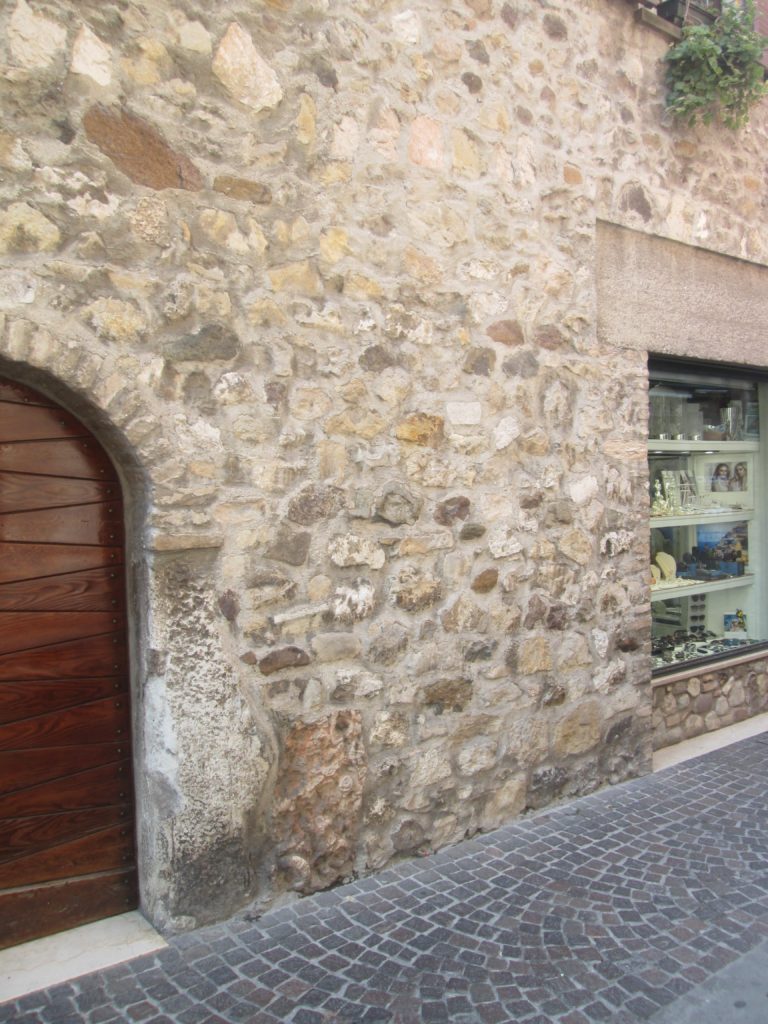
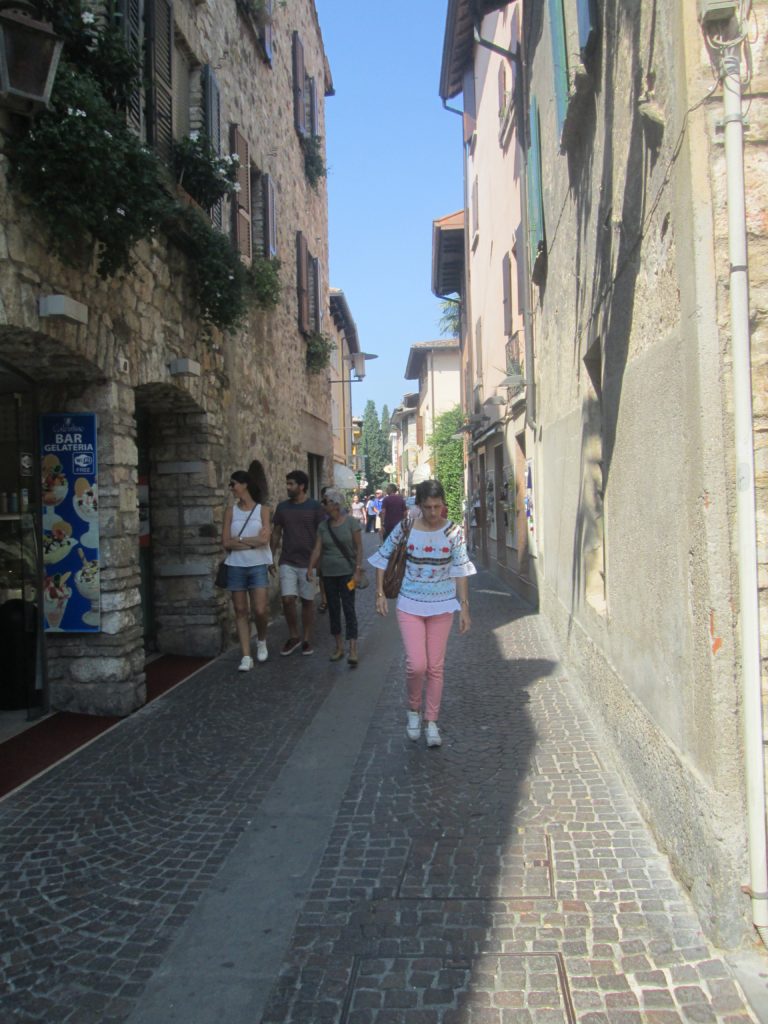
Another narrow footpath between two stone buildings has something exciting about the access. The whimsical, artistic humanness of the stone column below is emphasized.
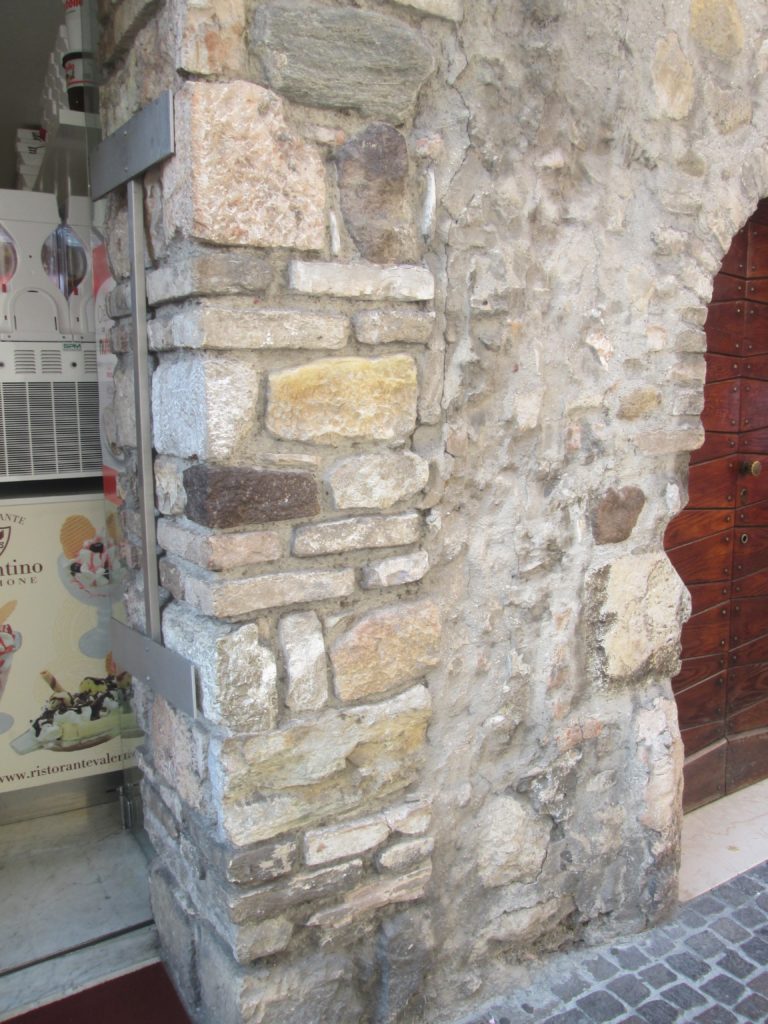
______________________________________________________________________________
The end of our time going on the ferry around Lake Garda to Simone ….. An Awesome time !!!
